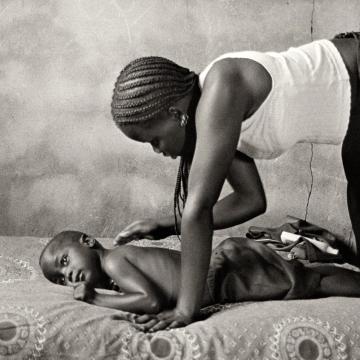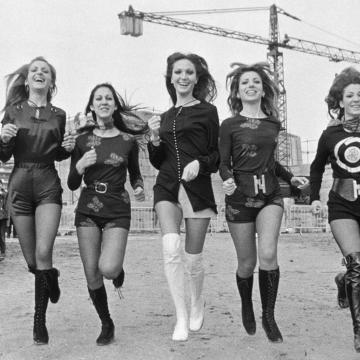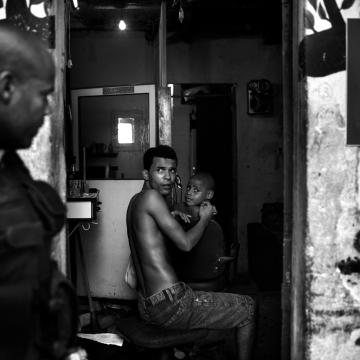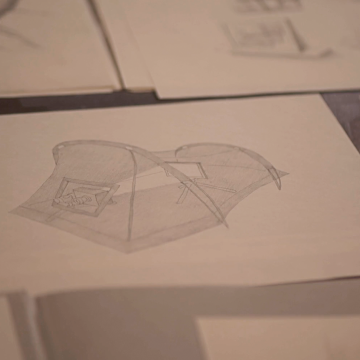Since opening on the 17th of April, Espacio Iberia has welcomed dozens of guests with one thing in common: their infinite talent. Talent that has inspired all the people who have sat there to listen to them.
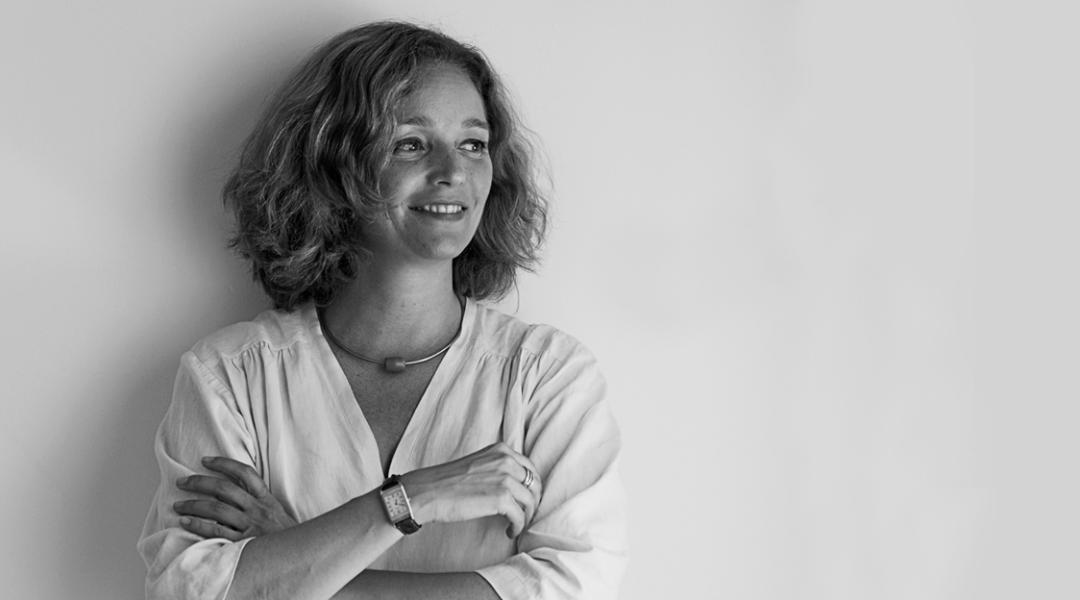
We chatted with Silvia Omedes, founder of Photographic Social Vision, a non-profit entity has been promoting and developing the social value of documentary photography since 2001. A key figure to understand photojournalism from the second half of the 20th century.
Silvia Omedes (Barcelona, 1971) defines herself as a cultural manager, independent curator, photographer’s agent, publisher, and teacher of documentary photography. However, her job consists essentially in discovering and disseminating rough diamonds — photographic talents that go unnoticed and young photographers who travel around the world or around their home country to portray forgotten social causes. “I was born with a hypersensitivity to injustice and that makes me instantly attracted to people who witness what is happening and take photographs that are worth being showed,” she explains. In this interview we analyse the current state of photojournalism in Spain and how the relationship between the photographer and the viewer has evolved in the era of Instagram.
How would you define the current state of photojournalism in Spain?
Communication companies, which can no longer be considered “media”, aren’t giving visibility to photojournalistic and research projects. They’re subject to a global business model made up of large photography agencies that don’t delve into today’s challenges. What a media outlet pays for a year subscription equals the salary of a single journalist per month. Is it more profitable? It may be, but at the expense of credibility.
“Photojournalism will never be in crisis because it’s in the essence of mankind. It’s a natural impulse that drives us to tell stories that matter to us as a society”
That’s why sometimes Spanish and other European newspapers choose the same photograph for their front pages. What are we missing?
The images that large agencies sell to media outlets aren’t bad, but they don’t provide context or depth. Because of the economic crisis, newspapers fired many graphic editors, unaware of the importance of picking good, meaningful images. There’re great photographers in Spain with very interesting approaches, but photojournalists aren’t being supported, so the most talented go to work for international media outlets. We’re losing a direct, on-site look by Spanish professionals who could tell us first-hand stories.
Do you think photojournalism is in crisis?
No, photojournalism will never be in crisis because it’s in the essence of mankind. It’s a natural impulse that drives us to tell stories that matter to us as a society. The crisis is affecting the media because they aren’t adapting to changes in information and image consumption. Some media outlets have solved the problem brilliantly, such as The New York Times, which managed to move from paper to digital smoothly, offering quality content with rigour and commitment. If you offer quality, readers will want more quality, and they’ll be willing to pay for it.
Should that business model be studied at journalism schools?
It should be studied, and Spanish media outlets should follow suit. You don’t need to go New York to learn how they achieved it. Journalist Ismael Nafría wrote his doctoral dissertation on this business model and published a book explaining how journalism has reinvented itself in the era of social networks. If you belittle journalists and devote little space to pieces that enrich readers and make them more well-informed, you’re creating a precarious situation.
What characteristics should a photographic work have in order to be awarded or showcased in exhibitions?
I would highlight three keys that I always look for when photographers come with their portfolio asking for advice. A good photograph should be visually exciting, expressive, and powerful. Emotion is conveyed by the composition, the viewpoint, and the story. Good photojournalism should also be able to seduce viewers and appeal to them intellectually. It shouldn’t only appeal to their guts, but also to their intelligence — it should make them want to know more. And finally, it should be able to narrate in an interesting manner and to get into the viewer's skin. A good job is quickly detected because the photographs inform or narrate empathically, being aware of their contribution.
“Good photojournalism should be able to seduce viewers and appeal to them intellectually. It shouldn’t only appeal to their guts, but also to their intelligence”
In the Instagram era, is the relationship between the photographer and the viewer changing?
Up until now, photographers have been giving their work to a company representing them or sending the photos directly to media outlets. Now we’re seeing that young talents grow up thinking they should narrate in an interesting way and create a bond with their audience based on the subject’s interest. The world has changed, and photographers should look for new clients and new audiences and be self-critical. They must realize that, in order to survive, they have to be self-sufficient, and this entails renewing the language. The best emerging photojournalism is online, without a doubt. For a regular user, the door to the best photojournalism is Instagram, where there are many quality documentary works to follow.
But that forces the reader to look for the photographer. How to tell a good job from a bad one?
In the future, viewers will have the responsibility to create their own database of trustworthy journalists and photojournalists they want to follow and read because media companies have clear political interests. People are used to being provided with information, not having to look for it, and that model is going to change. People want truthful information and want to reach their own conclusions; nobody wants to admit they’re being manipulated.
Are digital natives more prepared for this change in visual communication?
Visual education is a pending subject in school programs. No photography is innocent. Therefore, we must be able to train into what a photo is about, who’s taken it and why, and with what objective. Young people would be more aware, but there is a lack of visual literacy. Enjoying a great visual culture or publishing many photos doesn’t qualify them to understand or read a photograph. When it comes to photojournalism, we must highlight its uses, values and functions so that it’s respected by new generations. It’s important to teach them to differentiate commercial and advertising images from informative and ethically valuable images, which is essential in a democracy, such as images that bear witness to what is happening.
“The door to the best photojournalism for a regular user is Instagram, where there are many quality documentary works to follow”
What photographic work has surprised you in recent months, or what emerging talent would you highlight?
For the latest Joana Biarnés Scholarship for Young Photojournalists very powerful projects were submitted. It’s amazing how new generations of photographers are clear about what urgent issues to address: gender, immigration, violence, and climate change. We could have given a Joana Biarnés Award, but we believe promoting new talent is much more interesting. That’s why we chose the scholarship format, which covers and supports the winner for nine months and provides the advice of a tutor throughout. The three finalists were brilliant, but there’s one that will be on everybody’s lips in the coming months and years: María Contreras Coll and her project “Call it by its name. Sexual violence in Spain”.
